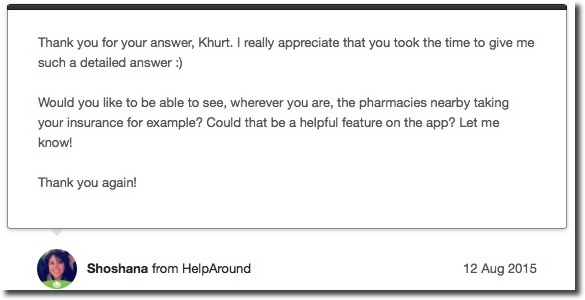I recently received a few emails from Shoshana Nacass, a writer for Help Around. If you are not familiar with Help Around, it's founders, Yishay Knobel and Shlomi Aflalo, developed an app to make it easy for people to rely on others so as "not to get stuck". I used the app for a few months before deciding that ultimately I would have very little need for it1.
But two of Shoshana's questions had me thinking a bit about how I plan for my diabetes management when travelling and inspired this blog post.
Hi Khürt,
How are you?
I was wondering how you keep track of the pharmacies nearby, your prescriptions, your doctor appointments, when you have to order more supplies, etc.
How do you remember it all?
To be transparent with you, we're trying to find ways to make it easier to keep track of it all. Understanding how you're currently dealing with it would be very insightful. Feel free to send me pics of your to-do-list as well.
Thank you so much! ~ Shoshana Nacass
All my supplies are delivered mail order. I have only three prescriptions so keeping track isn’t an issue. Anyone with prescriptions so plentiful they can’t keep track of them has more health issues than I can relate to but I think a disciplined and planned approach reduces the likelihood of an emergency.
I use the calendar on my iPhone, iPad and Mac to keep track of appointments. I enter them immediately after they are booked. I set reminders to re-order supplies or I put the supplies on automatic renewal. When I visit with my endocrinologist or physician, I am always asked if I need prescription renewals. My teenage kids know how to use a calendar so I expect this isn’t a challenge for an adult.
And her followup question after my somewhat flippant answer.

Would you like to be able to see, wherever you are, the pharmacies nearby taking your insurance for example? Could that be a helpful feature on the app? Let me know! ~ Shoshana Nacass
It might be useful to see which pharmacies are nearby if I am travelling and somehow forgot or lost my diabetes supplies. Losing them on the plane, train etc. isn’t likely if I plan correctly. If I keep the supplies needed for the trip on hand (e.g. in carry-on luggage or backpack) then I won't be at risk that the airline misplaced my luggage with my backup supplies. Basically, it is best to spend the time preparing a travel kit.
Assuming a two-week trip, I would pack the following:
- 5 infusion sets
- infusion set insertion tool
- 100 test strips (two vials). I test 6 times a day.
- 100 lancets
- A box of alcohol swabs (100 counts)
- One vial of insulin or two insulin pens
- Needles for the insulin pen
- Two CGMS sensors (Dexcom)
- Prescription for all the above
I’m packing for a one week vacation next month so I’ve already made my list. In fact, this was the first list I made for my trip. If you use Wunderlist you can download the list. These supplies occupy very little space. They can easily fit inside one of those soft lunch boxes along with an ice pack for the insulin. This makes it easier to inspect when going through the security checkpoint at the airport and easy to pack inside carry-on luggage.
If I somehow lost or forgot my supplies, the only items that could be provided by a pharmacy would be the insulin, needles, lancets, and test strips. The last two are easy to find and buy at any USA pharmacy. However, based on my personal experience with a major USA national chain, insulin is not readily available and I would need a doctor's prescription for the insulin and needles.
I have personal experience with driving on a road trip only to realize I forgot to grab my insulin pen and need to have a doctor's prescription to give to an out-of-state pharmacy. After that singular experience, I now keep a smaller version of the travel kit in my car.
- Two day supply of lancets
- One vial of test strips
- One day supply of alcohol swabs
- One CGMS sensor
- One infusion set
Due to a lack of temperature control when parked, I don’t keep insulin in my car.
I have developed a habit of going through my checklist before the trip. This has helped me avoid many diabetes supplies emergencies. Plan, plan, and then plan.



